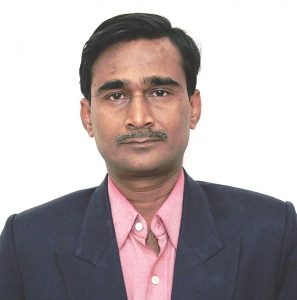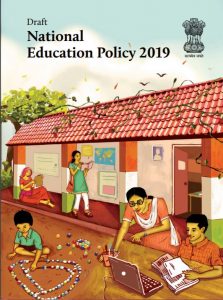 By Nageshwar Patnaik in Bhubaneswar, September 7, 2019: The country celebrates September 5 – the birthday of India’s second president and eminent educationist, Sarvepalli Radhakrishnan, as Teacher’s Day since 1962, the year.
By Nageshwar Patnaik in Bhubaneswar, September 7, 2019: The country celebrates September 5 – the birthday of India’s second president and eminent educationist, Sarvepalli Radhakrishnan, as Teacher’s Day since 1962, the year.
“Education is the instrument for social, economic and cultural change”, Dr Radhakrishanan had said emphasizing the importance of education in the holistic development of the country. Had he been alive to-day, he would have been the saddest person seeing the education scenario in the country today.
Only half of all students who enter primary school make it to the upper primary level and less than half that get into the 9-12 class. Only 58 percent of children enrolled in class three to five could read a class one text. About 47 percent were able to do simple two-digit subtraction. Only half of the children in class five to eight could use a calendar. They were not found proficient in even basic skills; about two-thirds of the students in class four could not master the measurement of the length of the pencil with a ruler.
As per UNESCO data, India has one of the lowest public expenditure rates on education per student, especially compared to China. With a literacy rate of 77 percent, India lags behind other Brazil, Russia, India, China and South Africa (BRICS) nations, which have literacy rates above 90 percent. Not only does India grapple with poor quality teachers, it also has fewer total teachers in comparison with other countries that do a better job at education.
Undoubtedly, India had messed-up its education system. The rulers committed a great blunder by not expanding primary and secondary education and instead went on to build higher education in general, IITs in particular, for the elite. The country needs to expand higher education, but not at the expense of providing basic education to all.
Had India begun revamping school education at the start of economic liberalization in early 1990s, it would by now have had the world’s largest pool of well-educated and highly trained workers. Fortunately, India continues to have the largest number of young people and next year, it is to be the youngest country in the world with the median age of 29. By ensuring world-class education over the next few decades, India will be well on its way towards becoming a developed nation sooner than expected.
 Belatedly, the Narendra Modi led NDA government has come out with the Draft New Education Policy (NEP) with an aim to make it relevant and applicable for at least two decades keeping the dynamic and fast-changing nature of the education space in India and the world.
Belatedly, the Narendra Modi led NDA government has come out with the Draft New Education Policy (NEP) with an aim to make it relevant and applicable for at least two decades keeping the dynamic and fast-changing nature of the education space in India and the world.
The 484-page report on Draft NEP prepared under the chairmanship of Dr K Kasturirangan clearly admits that the country had “unfortunately dropped the baton with regard to quality of education. The implementation of the two previous education policies is still incomplete”.
The Constitution (Eighty-sixth Amendment) Act, 2002 that inserted Article 21-A in the Constitution of India envisages free and compulsory education for all children in the age group of six to fourteen years as a Fundamental Right. The Right of Children to Free and Compulsory Education Act, 2009 (RTE Act) which came into force in April 2010, entitles every child of the age of six to fourteen years to the right to free and compulsory education in a neighbourhood school till the completion of elementary education. And yet, a mind-numbing uniformity prevails in the education system today, one in which students are not nurtured for their individual potential, in complete antithesis to our ancient traditions, the report states.
The NEP also unequivocally underscores raising investment in education substantially – including a significant increase in public financial investment, as also in philanthropic investment. Public expenditure on education in India was 2.7% of GDP in 2017-18. This was about 10% of the total government (Centre and States) spending according to the Economic Survey 2017-18. Public spending on education has never attained the 6% of GDP envisaged in the Policies in 1968, 1986 and in the 1992 Programme of Action.
Incidentally, the annual public investment in education in India over the last 5 years has been hovering around 3% of GDP compared to 7.5% for Bhutan.
 The Policy calls for significant increase in public investment in education up from the current 10% of overall public expenditure in education to 20%, over a 10-year period. At the same time, the draft Policy calls for the rejuvenation, active promotion and support for private philanthropic activity in the education sector. This includes philanthropy by individuals (whether large or small scale), corporate social responsibility (CSR) funds of corporates, and community mobilisation of funds. The Policy also suggests an equitable method for charging fees to those students who have the capacity to pay in higher education, while fully recognizing that such fees cannot support financial viability of any higher education institution; private philanthropic or public support will be required.
The Policy calls for significant increase in public investment in education up from the current 10% of overall public expenditure in education to 20%, over a 10-year period. At the same time, the draft Policy calls for the rejuvenation, active promotion and support for private philanthropic activity in the education sector. This includes philanthropy by individuals (whether large or small scale), corporate social responsibility (CSR) funds of corporates, and community mobilisation of funds. The Policy also suggests an equitable method for charging fees to those students who have the capacity to pay in higher education, while fully recognizing that such fees cannot support financial viability of any higher education institution; private philanthropic or public support will be required.
The NEP rightly gives thrust on early childhood education by making it an integral part of school education, and its inclusion in the Right to Education Act (RTE). The investments in early childhood education will be on creating adequate infrastructure, developing learning resources, building teacher capacity and ensuring nutrition.
Calling for improvement of basic infrastructure, the Report calls for drastic makeover of existing Anganwadis, funding of all early childhood education centres for safety, creating a cheerful environment and providing comfort and enhancement of learning resources.
The challenge before the Modi government is to bring bold reforms in the moribund education policy and focus on primary education with financial backup. Prime Minister Modi has taken the lead in taking initiative to create globally competitive institutions.
India will need to accelerate that process now so that when fundamental innovation in education becomes a reality as an engine of growth in the coming decades.


Leave a Reply
Be the First to Comment!